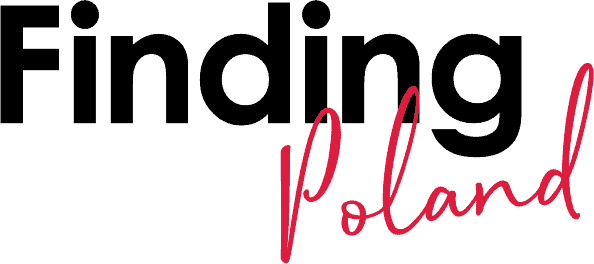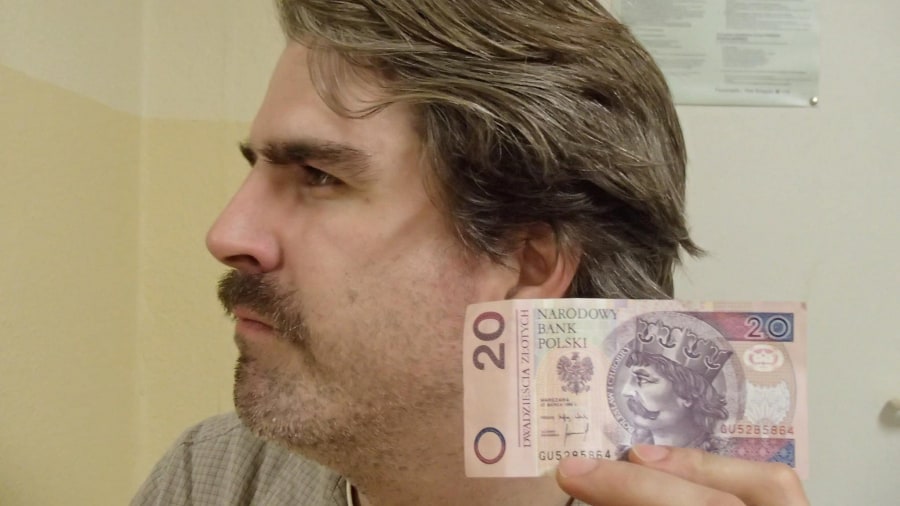I realise that you can go straight to Numbeo to check out the average living cost in Poland.
However, I thought it’d be helpful to share some information about the cost of living in my city – Łódź – and compare my findings with those on numbeo.com. As I lived in Gdańsk for nearly five years, it is inevitable that I will also want to make passing references to the cost of living in this city.
According to Numbeo, Łódź has the sixth highest cost of living index in Poland (as of April 5, 2025):
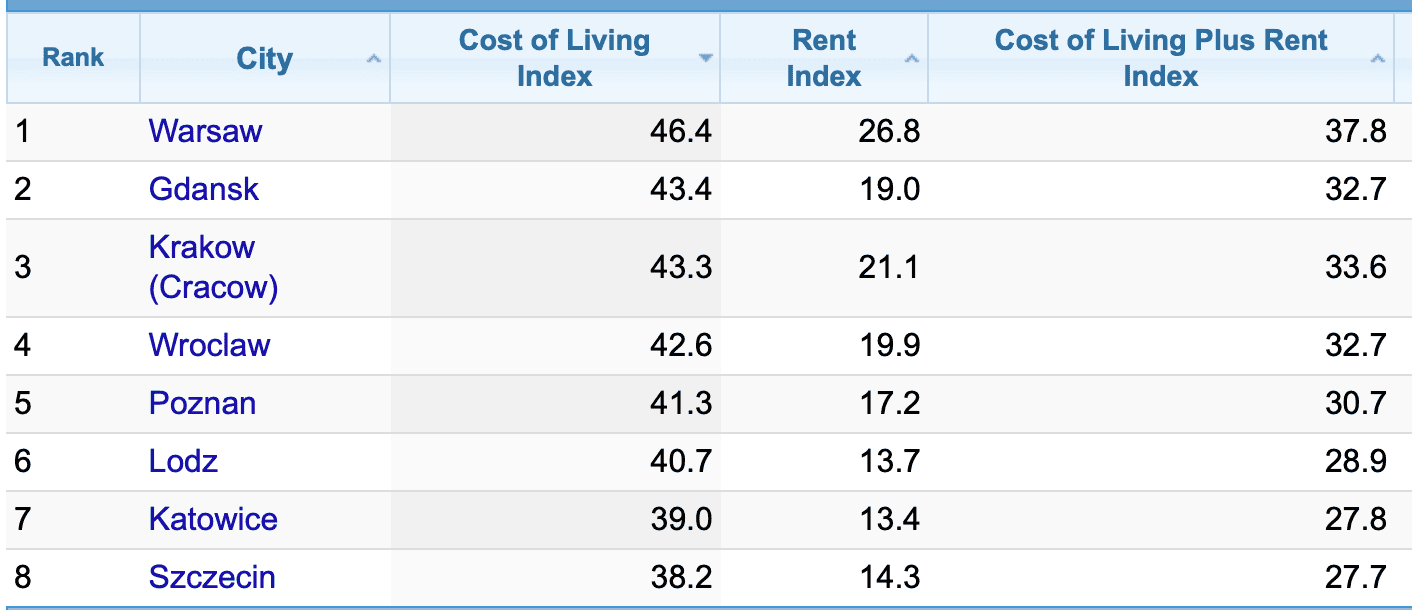
How are the cost of living indices calculated on Numbeo?
All of the cost of living indices on numbeo are relative to New York City. Therefore, indices for New York City stand at 100%.
In the table in the previous section, Łódź has a rent index of 13.7. This means that, on average, rents in Łódź are around 86% less expensive than in New York City.
The main cost of living index is a relative indicator of consumer goods prices, including groceries, restaurants, transportation and utilities.
The cost of living index in Poland
I’ve never considered Poland to be an expensive country to live in. Indeed, I’ve even written about what is cheap in Poland compared with other EU countries, Serbia (where I lived for four years) and the UK.
Numbeo confirms that, after the early-year indexes for 2025 were compiled, Poland is now 67th in the world when it comes to the cost of living index.
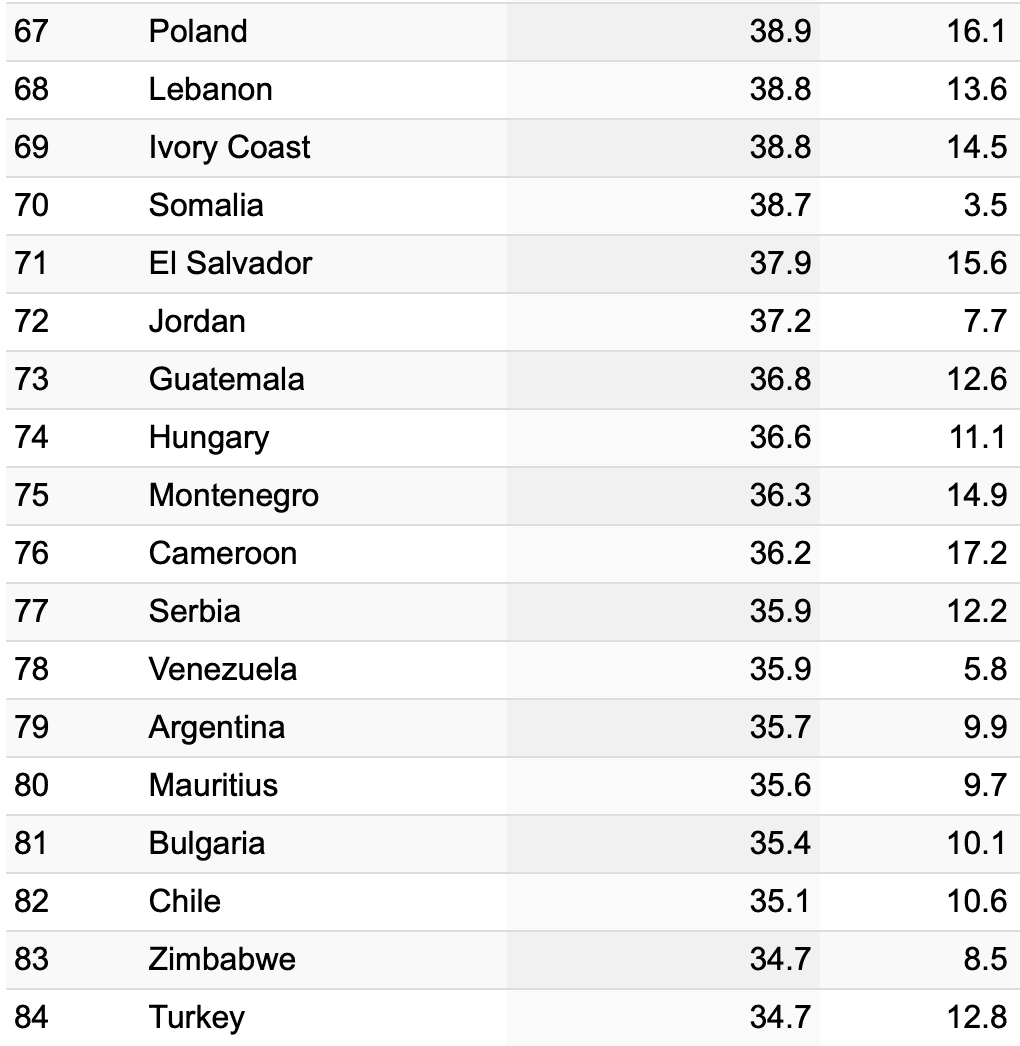
The second column of figures represents the rent index.
I’ll now break down the cost of living index in Łódź, analysing areas as diverse as apartment prices, average rents per month, eating out, supermarket shopping, transportation, monthly utilities and private healthcare.
I’ll refer to some of my own experience rather than solely relying on average cost of living figures on Numbeo.
Finally, I’ll compare the cost of living in Łódź with average living costs in Gdańsk.
Real estate in Poland
Are you planning to purchase an apartment in Poland and settle down here?
Perhaps you’re an expat who’s been offered a job and you’re looking to rent an apartment in Poland?
Let’s check out the current state of play on the property market in Gdańsk.
Purchasing real estate in Łódź
As of April 2025, it’s my impression that it’s getting more and more difficult to buy a flat constructed after the year 2015 in Łódź for less than 10,500 zl per square metre. This is particularly true for flats under 60 m2. Anything under this price tends to be located more on the outskirts of the city.
I’ve just run a search on Poland’s leading property portal otodom for properties in Łódź which cost between 8,000 zl and 10,500 zl per square metre. I set the earliest year of construction to 2015 and latest year of construction to 2023.
The search returned only 122 results.
For less than 10,500 zl, it’s possible to buy an old flat or a flat from a developer with construction still in progress. However, this only applies to those districts further away from the centre of Łódź.
Prices on otodom are heavily inflated. I believe there’s tremendous scope to negotiate the price of apartments on the secondary real estate market down by at least 1,000 zł per square metre. In the last quarter of 2024, the average asking price of new apartments in Łódź was around 11,528 zł.
I’ll leave you with some news about the sale of my property in Gdańsk in January 2025. I paid around 9,750 zł per square metre for it back in May 2019. I sold it for around 13,000 zł per square metre. In all truth, I probably overpaid for the flat by 300 zł per square metre. However, my wife and I had to find somewhere to live and wanted to make sure our offer would be accepted by the owners.
Comparing real estate prices in Gdańsk and Łódź
When it comes to the average transaction price of apartments in Gdańsk and Łódź, I have located the average transaction price of apartments for the fourth quarter of 2024. Here’s what I’ve found for the two cities:
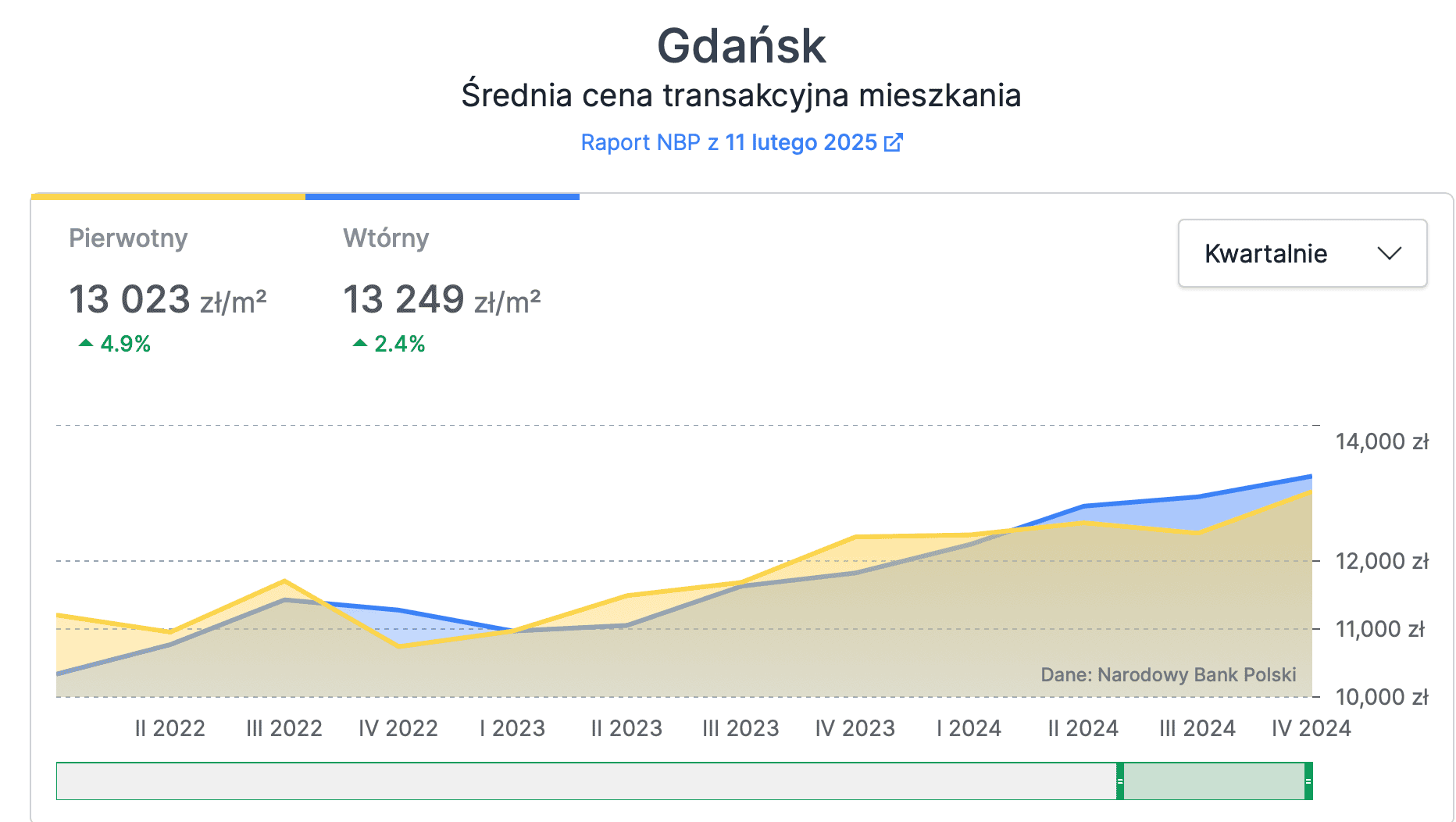

Interestingly, property prices on the secondary market (Rynek wtórny) were higher than prices on the primary market (Rynek pierwotny) in Gdańsk. The opposite was true in Łódź. One reason for this may be that many buildings on the secondary market in Łódź are very old and dilapidated. Therefore, buyers are more willing to pay extra for properties under construction.
Comparing rental prices in Gdańsk and Łódź
When it comes to renting out an apartment, be prepared to pay around 3,000 zł for a one-bedroom flat in Gdańsk that’s not right on the outskirts of the city or in an old communist block of flats.
As for the situation in Łódź, renters can expect to pay around 2,600 zł per month for a presentable one-bedroom apartment that’s within a short journey of the city centre by public transport.
Monthly utility bills
That old friend – czynsz administracyjny
I have previously written about the communal fees you have to pay as a landlord or tenant.
Called czynsz administracyjny, the communal fees bill covers such wonders as electricity (inside buildings), the renovation fund, waste disposal, lift maintenance, cold water and canalisation and the maintenance of green spaces.
Back in April 2019, I was quite surprised when the owner of the flat I wished to purchase in Gdańsk showed me one of the czynsz administracyjny bills. I had expected the monthly total to be around 650-700 zł. In fact, the total with two parking spaces and storage unit (komórka lokatorska) in the underground garage was around 540 zl.
Now, some five and a half years down the line, the current owners have to pay 895 zł as well as an additional 249 zł for maintenance costs related to the garage hall and storage unit. 1,144 zł a month in total.
When it comes to communal fees in newer buildings in Łódź, I don’t think they are much lower than those in Gdańsk. The flat I’m currently renting has 66 m2 and my monthly communal charge is around 860 zł. Admittedly, the building, which was constructed in 2011, is quite a prestigious one.
It’s also worth mentioning that water and heating rates tend to be set at an average rate by property management companies. However, if you consume more than these average rates, you’ll have to pay extra.
Internet deals in Poland
It doesn’t cost an arm and a leg to have high-speed fibre-optic Internet in Poland.
I’m currently with Orange will have to pay 75,01 zł between months 7 and 24 of a two-year contract for a speed of up to 600 Mb/s. There is no fee for internet service for the first six months of the agreement. I can confirm that the internet connection is stable and the download and upload speeds always match what my internet plan initially advertised.
Electricity
My electricity bill arrives every month.
My bill for the period from 10 February, 2025 to 13 March, 2025, amounted to 183,61 zł for 151 kWh of electricity use.
My wife and I didn’t leave Łódź during that period. It’s also worth pointing out that we work from home and use the oven and induction hob most days.
Grocery shopping in Poland
Food prices in supermarkets in Poland are comparable to prices in other EU countries.
Throughout 2023 up until December 2024, I kept tabs on prices of certain food and drink items at Carrefour supermarket in Gdańsk. Now that I live in Łódź, I recorded prices of staple foods for the first time at a Carrefour on April 7, 2005:

I do like eating citrus fruits, and certain stone fruits, such as mangoes. However, many of these fruit varieties are really expensive in Poland.
Finally, there are certain products, such as avocados, which are very dear in Poland. I think your Average Joe could only afford to buy them a few times per month.
Restaurants and cafes in Polish cities
In general, it’s not expensive to eat out and have a coffee in Poland.
If you wish to go to a reputable pizza restaurant, indulge yourself in Polish cuisine or visit a pierogarnia (dumpling restaurant) two or three times a month, your wallet won’t take a hit.
One of my favourite places to eat out in Gdańsk is the dumpling restaurant Pierogarnia Mandu.
Mandu’s menu confirms that you can eat out well in Gdańsk for around 40 zl (€9.50).
As for eating out in Łódź, my wife and I often go to a centrally-located restaurant called Cud Miód Fabryczna. serves tasty meat-based main meals for around 60 zł and burger sets for as little as 45,99 zł.
Car ownership and public transport in major Polish cities
In major Polish cities, it’s not expensive to buy a monthly pass to travel on public transport.
I currently pay 168 zł a month to use public transport in Łódź. Passengers can save money by paying 414 zł for a three-month pass or 1490 zł for a 12-month ticket. Timed tickets are rather cheap. It costs 4,40 zł for a twenty-minute ticket.
When it comes to monthly public transport tickets, the situation is rather more favourable in Gdańsk:
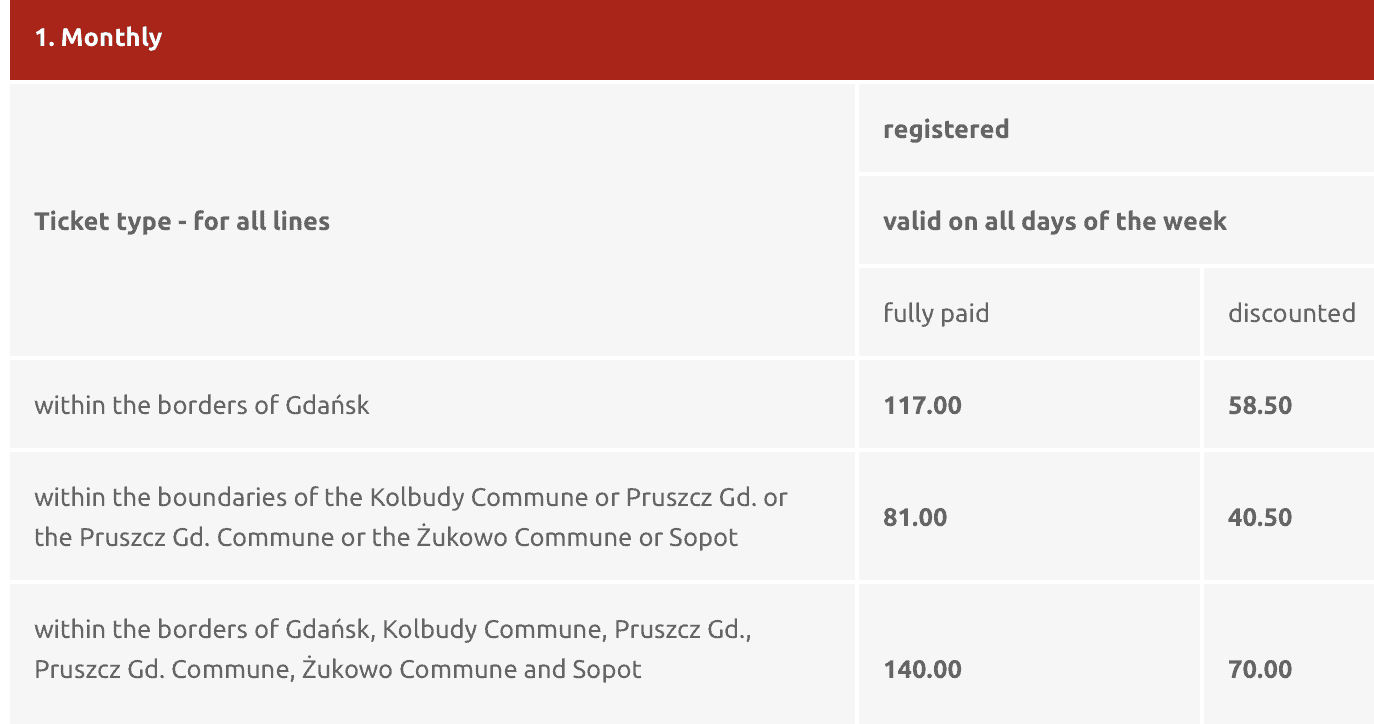
Since April 3, 2023, it has cost 117 zł for a monthly pass valid on all days of the week. A monthly ticket enables one to travel on regular, fast and night bus and tram routes within Gdańsk city limits.
I’ve just taken a look at the price per thirty-day period in other major Polish cities, namely Warsaw, Kraków, Poznań and Wrocław. Gdańsk is among the cheapest cities when it comes to monthly travel. Remarkably, public transport in Warsaw is cheaper than in any other city.
I never hesitated to pay 117 zł for a monthly pass in Gdańsk. It was a lot less hassle to take a tram into town than it was to sit in traffic jams and drive around looking for a parking spot. The traffic is a lot heavier in Łódź so I try to avoid driving in this city as well.
As for fuel prices, a litre of petrol in Łódź costs around 5.80 zł. Diesel costs a little more (around 6,02 zł) as of April 8, 2025.
When it comes to comprehensive car insurance, it costs around 200 zł a month for a policy with basic variants.
Overall, I believe that the average living cost in Poland becomes much lower if you’re prepared to use public transport on a regular basis.
Healthcare
My wife and I currently have access to public medical services offered by the National Health Fund (Narodowy Fundusz Zdrowia; NFZ).
Nevertheless, I have some experience with searching for prices for private healthcare packages.
Back in 2020, I was in contact with an agent working for Medicover.
The package he was determinedly trying to flog me for several weeks was Elite +. The Elite Plus package offers comprehensive outpatient care, unlimited home visits, hospital treatment and medical care overseas.
The price I was quoted for my wife and me – 653 zl per month.
I don’t doubt that the package is “fully comprehensive”, but I can’t afford that sort of money.
So, my wife and I rely on emergency treatment provided by the NFZ. Moreover, we visit private specialists when we need to. Most specialists in Gdańsk charge around 150-200 zl for a consultation, which is very reasonable.
My wife and I don’t hang out in medical clinics all that much. However, we may look into purchasing a cheaper basic medical package one day which provides assistance in emergency situations, outpatient procedures and consultations with doctors.
The screenshot below summarises Medicover’s Standard + package, with the annual fee for two adults – quite fair I believe:
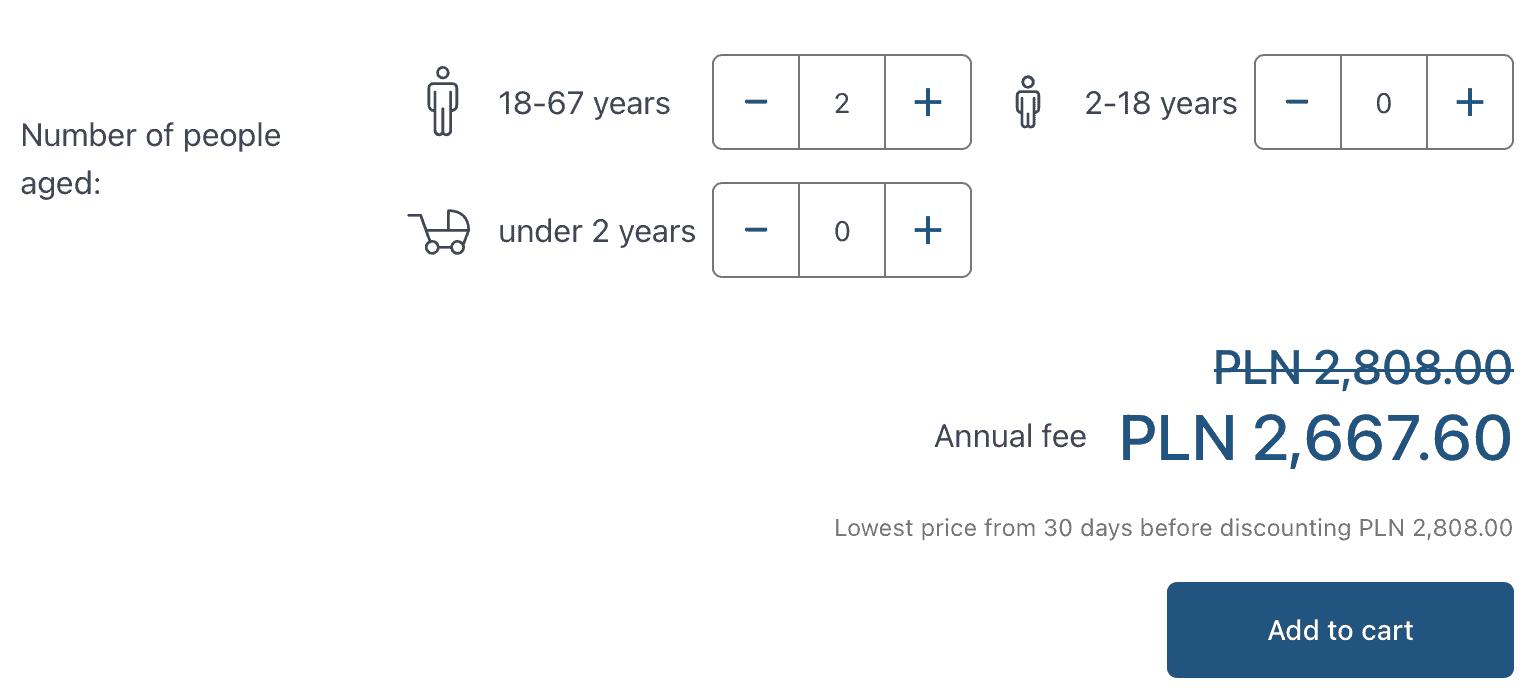
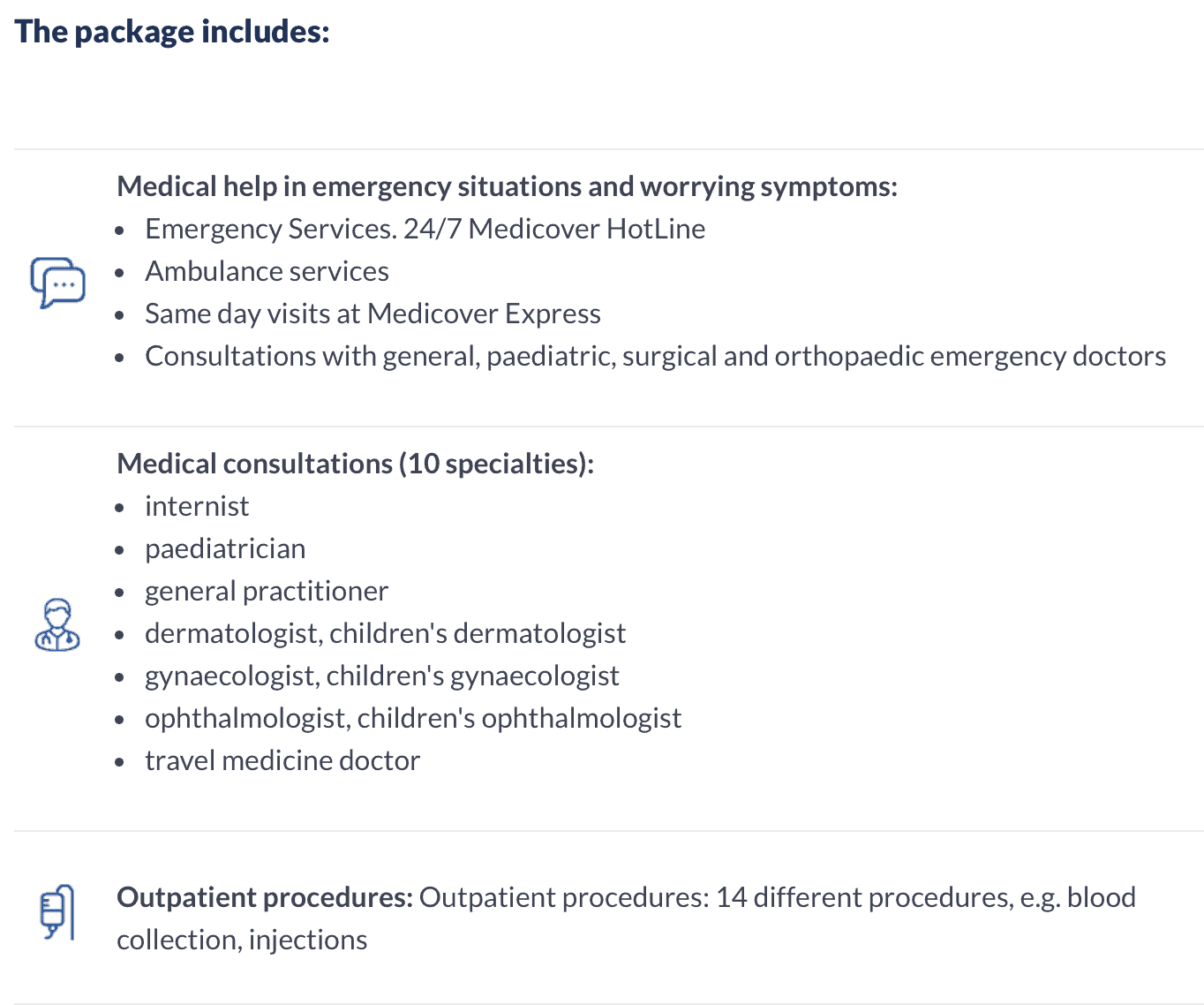
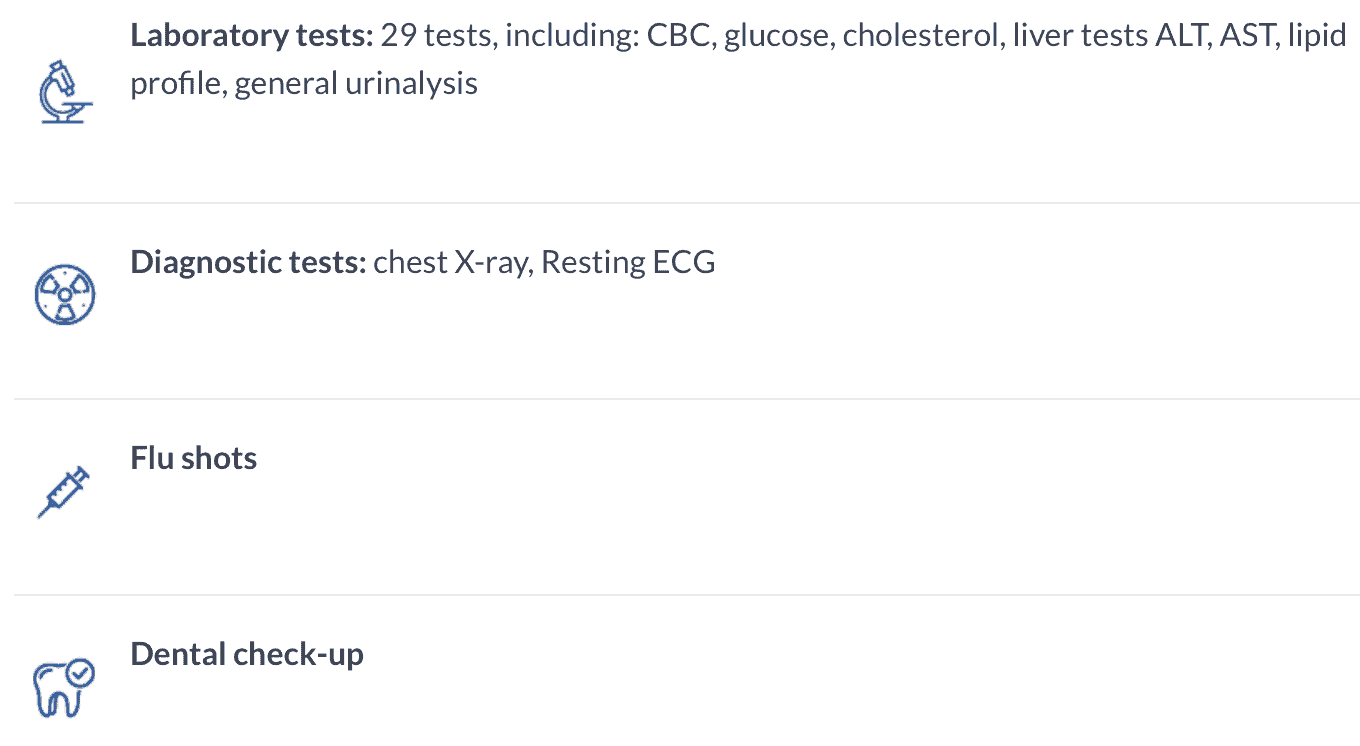
Salaries and adding things up
Let’s just recap. Our imaginary couple are renting out a 66 m2 flat in a newly-built block of flats in Łódź. They are childless, mostly rely on public transport but still run a car.
I will now add things up so you can get a better sense of the average living cost in a major Polish city:
- Rent – 2900 zł
- Communal fees, electricity and Internet – 860 zł
- Groceries – 1400 zł
- Restaurants and cafes – 280 zł
- Monthly transportation tickets – 336 zł
- Petrol and car insurance – 480 zł
- Basic private healthcare package – 215 zł (for two)
TOTAL = 6471 zł
Of course, you would need to add the cost of cosmetics and other leisure activities to the above.
If you wish to set up as a sole trader in Poland (I currently run a company teaching English here), social insurance contributions will set you back at least 1,400 zł from the seventh month of operations.
According to the Statistical Office in Łódź, the average monthly gross salary for entrepreneurs in Łódź in January 2025 was 8,148 zł.
Summing up, I may conclude that most couples (with or without children) might struggle to keep up with the average living cost in major Polish cities if only one person works.
